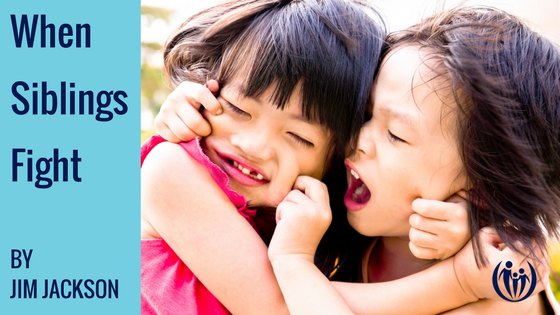
When Kids Fight
How Fights are Reinforced…or Resolved
If kids get a stern scolding, angry tones, harsh consequences, and nothing else from parents when they physically fight, then fighting is reinforced. This is because the combative mood is continued and modeled by the parents. In the kids’ minds, scolding is nothing more than a grown up form of intimidation and power. Children learn by the adult’s example that to win at fights is to win at life.
However, if fighting children are constructively managed, they will learn to work through conflict better. They’ll learn that resolving conflict well is a win for both parties. So here are some quick ideas for constructive conflict intervention when kids fight.
The first thing kids need to learn is that their conflicts are theirs. Adults far too often get involved with their own power and intimidation in conflicts where their intervention is not needed, or ultimately helpful. If your kids’ conflict is not leading to destructive patterns in their relationship, then simply stay out of it, or encourage them to fight fair and ask for help if needed. But if their fighting continues to become more hurtful, then intervention can help as long as it considers the following principles.
1. Stay calm.
Calm is like water on a fire. Sometimes the fighting is so hot that calmness has no effect. This is when a big dump of water is needed, in the form of a loud and constructive input (not anger and control!). For example: “Whoa! Hold on! Let’s not hurt each other!” This said loudly will get attention, and can help everyone, parents included, to calm down. If you can’t get calm when you intervene, your kids won’t learn to calmly navigate conflict either.
2. Connect.
Without taking sides, make sure the kids know you are for them, not against them, by empathizing and listening. Empathy lets them know you understand and value their perspectives. You can start the ball rolling by simply making objective observations like, “Wow! you two are really upset right now! It can be really frustrating when things don’t work out.” Or, “I can see you’re having a tough time solving this.” These statements give kids a chance to put some words to their thoughts and feelings. Research tells us that, “Children who accurately identify and label emotions tend to be less aggressive …and are generally more socially competent.” *
3. Engage the kids in solving for themselves.
Ask questions like these: “How do you want to solve this? Are you ready to solve it now, or do you need a break? What do you need from me in order to stay respectful with each other?” This gives them a chance to think through the “Peace Process” for themselves and come up with ideas. Especially for younger children, you may want to employ a “restitution consequence”: the child chooses something helpful or kind to do for the other child – when they are ready, but before they engage in any favorite activities.
4. Set boundaries for future fights.
When the dust settles, talk about ways to solve conflicts more effectively. Ask them what rules they think would help. Agree together what will happen if the physical fighting continues. As a bottom line, calmly tell the kids, “When you hurt each other, it hurts not just your bodies, but your relationship. So I’m going to get involved whenever you start hurting each other. If you keep hurting each other physically, I’ll involve others to help because it’s not okay in our house to hurt each other that way, and it’s against the law!”
Physical fighting between siblings can easily balloon out of control if left unchecked. “Violence toward siblings is much more common than violence by parents toward their children, and no less severe,… endures longer, and is no less traumatic than abuse by parents.” ** Be willing, if the kids keep pushing it, to calmly call a social worker, or the police to let them know your kids are assaulting each other, or involve a family therapist.
In general, remember that you can’t stop all your kids’ fights. But you can avoid responding with either anger or passivity. Your kids need to see that you are engaged and purposeful, taking steps to keep everyone safe by helping them learn to solve their problems constructively.
*https://www.education.com/reference/article/ability-identify-name-emotions/
Take 15 minutes to learn how to give consequences that teach, rather than simply punish, by downloading our free ebook Consequences That Actually Work.

